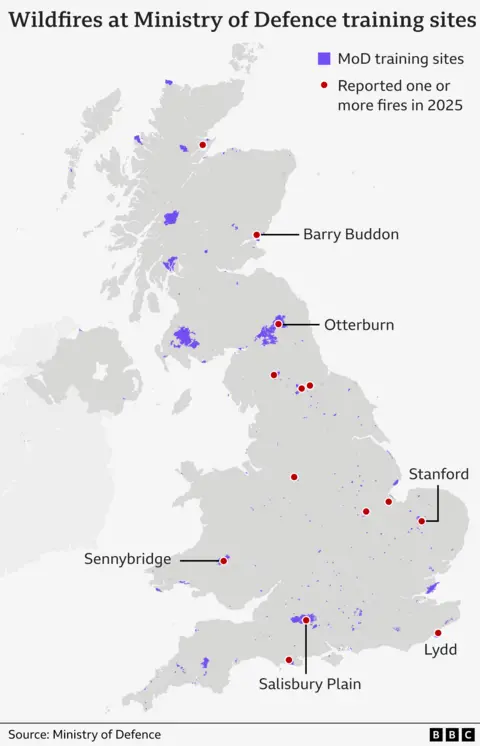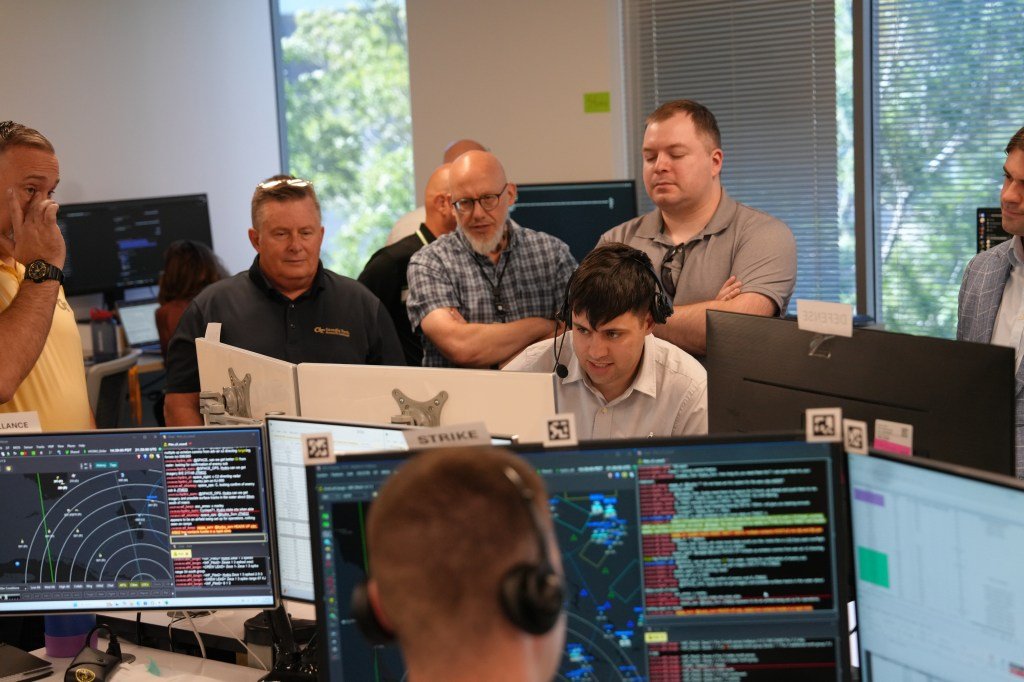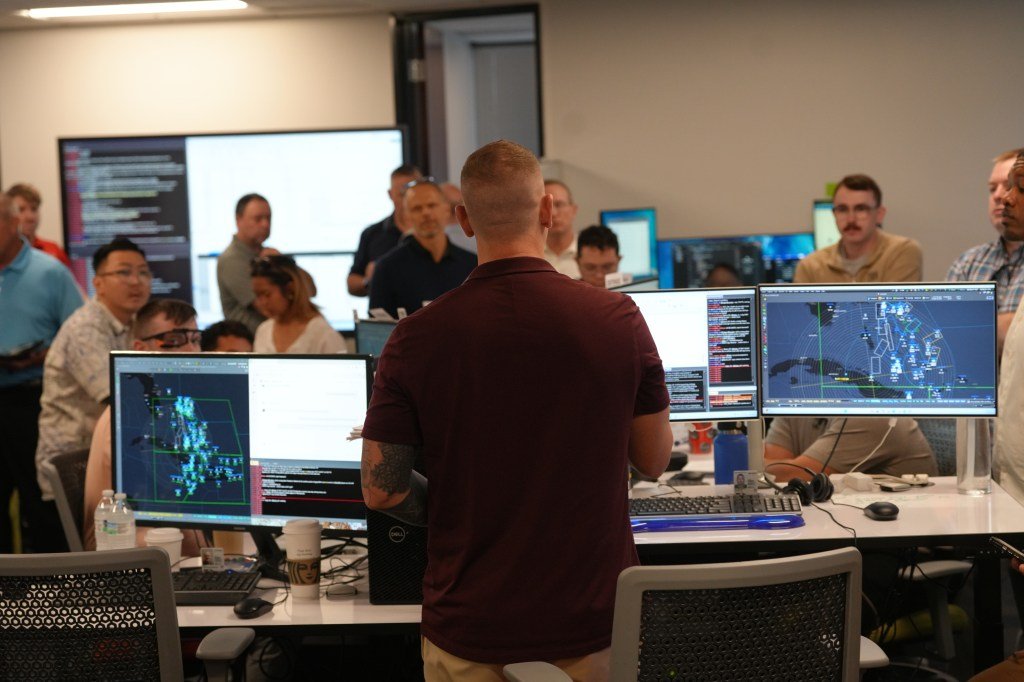AI Research
Artificial Intelligence News for the Week of August 29; Updates from IDC, SoftwareOne, Wiley & More

Solutions Review Executive Editor Tim King curated this list of notable artificial intelligence news for the week of August 29, 2025.
Keeping tabs on all the most relevant artificial intelligence news can be a time-consuming task. As a result, our editorial team aims to provide a summary of the top headlines from the last week in this space. Solutions Review editors will curate vendor product news, mergers and acquisitions, venture capital funding, talent acquisition, and other noteworthy artificial intelligence news items.
For early access to all the expert insights published on Solutions Review, join Insight Jam, a community dedicated to enabling the human conversation on AI.
Artificial Intelligence News for the Week of August 29, 2025
Broadcom Releases New Product Innovations for AI-Driven Enterprises
Broadcom has announced a suite of new product releases targeting AI-driven enterprise transformation, with advancements in automation, security, hybrid cloud management, and edge computing. These solutions equip organizations to scale and secure their infrastructure for next-gen workloads, driving agility and resilience in rapidly evolving digital markets.
Read more → https://www.broadcom.com/company/news/product-releases/63401
Cerebras and Core42 Deliver Record-Breaking AI Performance
AI hardware innovator Cerebras and UAE-based Core42 have set a new benchmark by training a 180-billion parameter Arabic language model on 4096 CS-3 AI accelerators in under 14 days. This collaboration demonstrates the rapid scaling power of Cerebras’ wafer-scale platform and advances the infrastructure market for large-scale national and multilingual AI solutions.
Read more → https://finance.yahoo.com/news/cerebras-core42-deliver-record-breaking-132300564.html
Digitate Unifies AIOps and Observability with OpenTelemetry Integration
Digitate has advanced its unified AIOps and observability platform with native OpenTelemetry integration, offering holistic, real-time monitoring and automation for IT and business operations. The update enables enterprises to unify signals across distributed systems, driving end-to-end visibility, automated incident response, and actionable insights for digital transformation initiatives.
Domo Deepens AWS Partnership to Accelerate GenAI Adoption
Domo announced a strategic collaboration agreement with AWS to boost enterprise adoption of generative AI. The partnership will expand Domo’s suite of GenAI solutions and support seamless integration with AWS AI services, enabling customers to stay agile and innovative as AI capabilities accelerate.
Exterro Launches AI-Powered Intelligence to Transform Legal Review
Exterro is launching Exterro Intelligence, a new AI platform to streamline legal investigations and document review. The solution leverages generative AI and smart workflows to accelerate e-discovery, improve review accuracy, and deliver actionable insights for legal, compliance, and investigations teams—reducing manual burden and time-to-evidence for modern legal operations.
Google Gemini Now Available On-Premises for Secure AI Everywhere
Google has made its Gemini AI models universally available with the release of Gemini on Google Distributed Cloud (GDC), now in general availability for air-gapped environments and preview for connected deployments. Enterprises and governments with stringent data sovereignty needs can securely run advanced generative AI—including multimodal analysis and custom agents—entirely within their own data centers.
Read more → https://cloud.google.com/blog/topics/hybrid-cloud/gemini-is-now-available-anywhere
HPE Launches Mist Agentic AI for Self-Driving Network Operations
Hewlett Packard Enterprise (HPE) has rolled out Mist Agentic AI, its latest innovation for self-driving network operations. The platform automates troubleshooting, anomaly detection, and network optimization, helping enterprises achieve greater uptime, resilience, and efficiency as digital demands grow.
Hyland Debuts Enterprise Context Engine and Agent Mesh
Hyland has launched its Enterprise Context Engine and Agent Mesh, two AI-powered frameworks to deliver holistic, connected enterprise automation and contextual intelligence. These solutions centralize contextual data, orchestrate agent-based workflows, and help large organizations enable smarter processes and decision-making across distributed business functions.
Read more → https://www.hyland.com/en/company/newsroom/hyland-unveils-enterprise-context-engine-enterprise-agent-mesh
IDC: Agentic AI to Exceed 25 Percent of Global IT Spend by 2029
IDC forecasts that agentic AI will command over 26 percent of worldwide IT budgets—$1.3 trillion—by 2029, up from less than 2 percent today. The research attributes this surge to rapid enterprise adoption of autonomous and task-oriented AI systems, reshaping spending priorities for digital transformation.
Jellyfish Research: AI Delivers End-to-End Impact Across the SDLC
A new report from Jellyfish dives deep into how AI is transforming every phase of the software development lifecycle (SDLC), from planning and coding to testing, deployment, and maintenance. The findings highlight productivity boosts, improved defect detection, and accelerated release cycles, showcasing the growing importance of AI-driven optimization in engineering organizations.
Read more → https://jellyfish.co/newsroom/end-to-end-ai-impact-sdlc/
NTT Data and Cisco Partner to Advance Next-Gen Networking
NTT Data and Cisco are deepening their partnership to deliver advanced network solutions optimized for AI, cloud, and edge applications. The collaboration will produce agile, secure infrastructure supporting digital transformation for global enterprises, including enhanced automation, threat detection, and service assurance as networking needs evolve.
Read more → https://services.global.ntt/en-US/newsroom/ntt-data-and-cisco-partner-to-power-networking
OpenText/Ponemon Survey: Information Readiness Threatens AI Goals
A new survey by OpenText and the Ponemon Institute reveals that a lack of information readiness is threatening organizations’ ability to successfully implement and scale AI. CIOs cited data fragmentation, poor integration, and insufficient governance as leading barriers, with 74 percent saying unpreparedness will delay AI value realization. The study underscores the urgent need for holistic data management to unlock enterprise AI’s full potential.
Pecan AI Launches DemandForecastAI for GenAI-Powered Supply Chains
Pecan AI has introduced DemandForecastAI, a generative AI solution designed to close the costly global supply chain forecasting gap. The platform leverages GenAI and predictive models to analyze and synthesize demand signals, improving accuracy for retailers and manufacturers and mitigating trillion-dollar inefficiencies from misaligned inventory and demand.
Uniphore Acquires Orby AI and RedRoute to Boost AI-Powered Automation
Uniphore has acquired Orby AI and RedRoute, expanding its platform’s AI-powered process automation, conversational AI, and contact center capabilities. With these acquisitions, Uniphore aims to deliver more adaptive, autonomous solutions for enterprise digital experience and customer service transformation worldwide.
Read more → https://finance.yahoo.com/news/uniphore-announces-acquisitions-orby-ai-120200993.html
Virtualitics Unveils IRIS AI Agents for Mission Readiness
Virtualitics has launched IRIS AI Agents, purpose-built to automate and enhance mission readiness in defense and government sectors. These agents leverage cutting-edge AI to support scenario simulation, decision intelligence, and operational planning, helping agencies and organizations achieve faster, data-driven mission outcomes.
Wiley Survey Reveals AI Change Fatigue as Emerging Crisis Risk
A recent survey highlights widespread AI change fatigue among enterprise employees, warning that the constant pace of AI-driven transformation may lead to productivity drops, higher turnover, and organizational risk. Respondents cited “overwhelming” AI deployments and insufficient support for upskilling. The crisis underscores the need for structured change management and holistic employee wellbeing strategies as AI adoption accelerates across sectors.
Read more → https://www.miragenews.com/survey-unveils-ai-change-fatigue-crisis-risk-1521442/
Expert Insights
 Watch this space each week as our editors will share upcoming events, new thought leadership, and the best resources from Insight Jam, Solutions Review’s enterprise tech community where the human conversation around AI is happening. The goal? To help you gain a forward-thinking analysis and remain on-trend through expert advice, best practices, predictions, and vendor-neutral software evaluation tools.
Watch this space each week as our editors will share upcoming events, new thought leadership, and the best resources from Insight Jam, Solutions Review’s enterprise tech community where the human conversation around AI is happening. The goal? To help you gain a forward-thinking analysis and remain on-trend through expert advice, best practices, predictions, and vendor-neutral software evaluation tools.
What to Expect at Solutions Review‘s Spotlight with SoftwareOne on September 10: How to Use Copilot Agents
Generative AI has evolved from a tool we harness for productivity to a true collaborator. With Copilot Agents, AI works alongside us to boost creativity, streamline workflows, and provide real-time coaching—becoming a valuable teammate and ushering in the next era of AI-driven productivity.
What to Expect at Solutions Review‘s Industry Trends Session with Denodo on September 16: AI Deep Research
We’ll explore the kinds of questions Deep Research can tackle: Why is customer churn rising in a specific region? How will new regulations impact our supply chain? What is the optimal strategy for entering a new market? These are the complex, open-ended questions that go far beyond dashboards and canned reports, questions that require reasoning, synthesis, and real-time, trusted data.
New Episode of The Cyber Circuit with Michael Morgenstern: The AI Revolution Needs Better Asset Management
From shadow AI implementations draining sensitive data to why “we went too fast with cloud and we’re doing it again,” discover why the organizations that can’t answer “what assets do we have?” are the ones AI will hurt most. Parker reveals why AI represents the fourth industrial revolution and what security leaders must do now before regulatory hammers drop.
SR Thought Leaders: Agentic AI Governance: 4 Criteria to Evaluate Tools by Kevin Petrie
As companies mature, they are taking a more sober view of the opportunity that agentic AI represents. In fact, only 27 percent of executives say they would trust fully autonomous agents for enterprise use, down from 43 percent one year ago, according to a recent Capgemini survey. They recognize the need to manage risks before reaping the innovation benefits of agentic AI. This requires a robust governance program, supported by effective technology.
Editorial: Soft Skills Crisis? Why Gen Z Struggles – and How Leaders Can Help by Dr. Laurie Cure
Soft skills have always played a quiet but powerful role in workplace success. After all, these are the often invisible qualities that allow people to collaborate, resolve issues, and lead with confidence — often the most essential elements for leadership success.
Editorial: The Evolution of Enterprise Data Archives in the AI Era by Archive360’s George Tziahanas
For decades, enterprise data archives have occupied an understated position within organizational IT infrastructure. These vast repositories of information were treated as necessary for meeting legal and regulatory obligations, but only modestly accessed once data was safely stored away. The prevailing approach was simple: keep costs low, ensure compliance, and preserve the data until a court order or regulatory investigation demanded its retrieval.
Editorial: Why Data Quality is the Make-or-Break Factor for AI Success by Semarchy’s Craig Gravina
According to a recent survey of 1,050 senior business leaders across the US, UK, and France, only 46 percent express confidence in the quality of their data. This lack of trust in data quality represents the Achilles’ heel of many promising AI strategies, underscoring a critical truth: without trustworthy data, even the most sophisticated AI initiatives risk falling short of their potential.
For consideration in future artificial intelligence news roundups, send your announcements to the editor: tking@solutionsreview.com.
AI Research
Hundreds of wildfires sparked by ‘live-fire’ military manoeuvres

Malcolm PriorRural affairs producer
 BBC
BBCLive-fire military training has sparked hundreds of wildfires across the UK countryside since 2023, with unexploded shells often making it too dangerous to tackle them.
Fire crews battling a vast moorland blaze in North Yorkshire this month have been hampered by exploding bombs and tank shells dating back to training on the moors during the Second World War.
Figures obtained by the BBC show that of the 439 wildfires on Ministry of Defence (MoD) land between January 2023 and last month, 385 were caused by present-day army manoeuvres themselves.
The MoD said it has a robust wildfire policy which monitors risk levels and limits live ammunition use when necessary.
 HIWFRS
HIWFRSBut locals near the sites of recent fires told the BBC they felt the MoD needed to do more to prevent them, including completely banning live fire training in the driest months.
Wildfires in the countryside can start for many reasons, including discarded cigarettes, unattended campfires and BBQs and deliberate arson, and the scale of them can be made worse by dry, hot conditions and the amount of vegetation on the land.
But according to data obtained by the BBC under the Freedom of Information Act, there have been 1,178 wildfires in total linked to present-day MoD training sites since 2020 – with 101 out of 134 wildfires in the first six months of this year caused by military manoeuvres or training.
More than 80 of the fires caused by training itself so far this year have been in so-called “Range Danger Areas” – also known as “impact zones”.

These are areas where the level of danger means the local fire service is usually not allowed access and the fire is left to burn out on its own, albeit contained by firebreaks.
The large amounts of smoke produced can lead to road closures, disruption and health risks to local residents, who are directed to keep their windows shut despite it often being the hottest time of the year.
One villager who lives near the MoD’s training site on Salisbury Plain said wildfires there, like the recent one in May, were “a perennial problem” and the MoD had to do more to control them and restrict the use of live ordnance to outside of the hottest months.
Neil Lockhart, from Great Cheverell, near Devizes in Wiltshire, said the smoke from fires left to burn was a major environmental issue and posed a risk to the health and safety of locals.

“It’s the pollution. If you suffer like I do with asthma, and it’s the height of the summer and you’ve got to keep all your windows closed, then it’s an issue,” explained Mr Lockhart.
Arable farmer Tim Daw, whose land at All Cannings overlooks the MoD training site on Salisbury Plain, said he “must have seen three or four big fires this year” but found the smoke only a “mild annoyance”.
He said many locals were worried about the impact of the wildfires on wildlife and the landscape, saying the extent of the area affected by the blazes often looked “fairly horrendous”, and likened it to a “burnt savannah”.
But he said the MoD was “very proactive” in keeping locals informed about the risks of wildfires and any ongoing problems on their land.
Wartime “legacy”
Aside from the problem of live military training sparking fires, old unexploded ordnance left behind from previous manoeuvres make wildfires harder to fight,
This month has seen a major fire burning on Langdale Moor, in the North York Moors National Park, since Monday, 11 August.
It has seen a number of bombs explode in areas that were once used for military training dating back to the Second World War.
One local landowner, George Winn-Darley, said the peat fire had produced “an enormous cloud of pollution” that could have been prevented if there had not been live ordnance on site.
“If that unexploded ordnance had been cleared up and wasn’t there then this wildfire would have been able to be dealt with, probably completely, nearly two weeks ago,” he told the BBC.
Mr Winn-Darley called for the MoD to clear up any major munitions left on the moors.
“That would seem to be the absolute minimum that they should be doing,” he said.
“It seems ridiculous that here we are, 80 years after the end of the Second World War, and we’re still dealing with this legacy.”
A MoD spokesperson said the fire at Langdale had not started on land currently owned by the MoD but that an Army Explosive Ordnance Disposal (EOD) team had responded on four occasions to requests for assistance from North Yorkshire Police.
“Various Second World War-era unexploded ordnance items were discovered as a result of the wildfires, which the EOD operator declared to be inert practice projectiles. They were retrieved for subsequent disposal,” he explained.
He added that the MoD monitors the risk of fires across its training estate throughout the year and restricts the use of ordnance, munitions and explosives when training is taking place during periods of elevated wildfire risk.
“Impact areas” are constructed with fire breaks, such as stone tracks, around them to prevent the wider spread of fire and grazing is used to keep the amount of combustible vegetation down.
Earlier this month, the MoD launched its “Respect the Range” campaign, designed to raise the public’s awareness of the dangers of accessing military land, such as live firing, unexploded ordnance and wildfires.
A spokeswoman for the National Fire Chiefs Council (NFCC) said it worked closely with the MoD to “understand the risk and locations of munitions and to create plans to effectively extinguish fires”.
“We always encourage military colleagues to account for the conditions and the potential for wildfire when considering when to carry out their training,” she added.
AI Research
AI Smart Assistant Gets to Work in City Planning Department

City staff in the planning department at Bellevue, Wash., have a new assistant that already has a commanding understanding of development codes, zoning maps and other detailed information.
The department has been using an AI-powered “smart assistant” to aid in the city’s permitting processes. Earlier this month, Bellevue moved the project — a partnership with Govstream.ai — from its early testing phase to “real-world scenarios,” Sabra Schneider, Bellevue CIO, said.
The smart assistant tool has been trained in the city’s development code, GIS data, zoning codes, parcel data, permit history and more so that it can assist in speeding up the permitting process, Safouen Rabah, founder and CEO for Govstream.ai, said.
“The system drafts code-cited emails, checks plans for completeness, flags zoning conflicts, and answers routine questions,” Rabah said via email. “But staff always remain in control — reviewing, editing and making final decisions.”
The assistant is three tools in one, Schneider said via email: chat, email and voice, “all tied into the same knowledge base and built for government use, with traceability and staff oversight built in from the start.”
For now, planning staff is using the AI assistant to look up parcel-specific zoning rules and then generate draft responses to resident inquiries, with citations to the development code.
“We’re also starting to use the tool to analyze conversations between the AI assistants and staff for thematic insights about how our community interacts with different aspects of permitting,” Schneider said.
Ultimately, technology like this smart assistant will free staff from repetitive tasks — which Rabah described as “document toil” — allowing them to focus on “judgment-driven work like safety, equity and community priorities.”
Bellevue also plans to extend the technology to the public so that residents, designers or contractors can also benefit from fast, “citation-based answers” to questions regarding projects or processes, Schneider said.
Initiatives like the Govstream.ai pilot stem from Bellevue’s Innovation Forum, which brought together members of the community, startups, students and others to brainstorm how to enhance city services and the overall quality of life — part of a broader strategy, Schneider said, to make innovation more open and actionable. The city will host a Civic Innovation Day Oct. 16 to highlight civic innovation in the greater Puget Sound area.
AI tools that help to cut down on repetitive tasks, search quickly through data or smooth out workflow gaps work in the kinds of areas where experts say artificial intelligence can bring value to organizations. The technology, they stress, should serve people.
“When I talk about artificial intelligence, I not only talk about computation. I talk about people, first and foremost,” Nathan McNeese, founding director of the Clemson University Center for Human-AI Interaction, Collaboration and Teaming, said during a recent webinar to discuss the new report, Strategies for Integrating AI into State and Local Government Decision Making: Rapid Expert Consultation, by the National Academies of Sciences, Engineering and Medicine.
“You need to understand who your people are before you can even have the idea of putting AI into an organization. Because AI’s going to fail in your organization if people are not your first consideration,” he said.
And starting small — a pilot project in one city department, limited to internal staff — is also advisable, Suresh Venkatasubramanian, a computer science professor at Brown University, where he directs the Center for Technological Responsibility, Reimagination and Redesign, said as he urged tech leaders to embrace an ethos of experimentation and “sandboxing” to understand how the AI systems work, within a specific context.
“AI is not like buying a piece of software, you buy it once, and it’s done, because it serves a specific purpose,” Venkatasubramanian said during the webinar. “It’s one of those things where it’s an ongoing conversation amongst the folks using the system, the folks impacted by the system.”
AI Research
AI tools accelerated battle management decisions during latest Air Force DASH wargame

This is part three of a three-part series examining how the Air Force is experimenting with artificial intelligence for its DAF Battle Network capability. It is based on several exclusive interviews with the 805th Combat Training Squadron, the Advanced Battle Management System Cross Functional Team, airmen and members of industry. Part one can be found here, and part two can be found here.
LAS VEGAS — A recent experiment held by the Air Force demonstrated that industry-developed artificial intelligence tools can not only shorten the time it takes battle managers to make decisions, but also give operators a more holistic picture of the battlespace.
The 805th Combat Training Squadron hosted its second Decision Advantage Sprint for Human-Machine Teaming (DASH) wargame in July, bringing Air Force personnel and industry software teams together at the squadron’s unclassified office in downtown Las Vegas, Nevada. DefenseScoop observed part of the two-week event, where vendors custom-coded AI-enabled microservices and tested how the technology could be applied to command-and-control operations.
“DASH 2 continued the Air Force’s campaign of learning to accelerate decision advantage for the joint force,” Col. John Ohlund, director of the Advanced Battle Management System (ABMS) Cross Functional Team, said in a statement. “While detailed results are still under review, the experiment advanced our understanding of human-machine teaming, match effectors, and collaborative battle management. The effort provided valuable insights that will guide future development.”
The DASH sprints are a new wargame series led by the 805th, also known as the Shadow Operations Center – Nellis (ShOC-N), and are designed to test emerging AI capabilities and concepts for battle management. Each experiment focuses on one subfunction of the Air Force’s Transformational Model for Decision Advantage, a methodology that breaks down the entire C2 process into 52 specific choices a warfighter makes during operations.
Teams from six companies — who asked to remain anonymous — as well as a group of Air Force software engineers participated in the DASH 2 wargame. Throughout the event, coders developed an AI microservice for the subfunction known as “match effectors,” which decides what weapons system is the best available to destroy an identified target.
“They’re going to run a generic red versus blue [scenario],” Lt. Col. Wesley Schultz, ShOC-N’s director of operations, said in an interview. “In general, offensive counter-air is going to go to the red side, drop a bomb [or] shoot down things and then get out of town.”
While the scenario seems simple in practice, there are dozens of variables an air battle manager considers when deciding what weapon to use. Those include tactical decisions — such as the specifics of the target and availability of blue forces — as well as environmental factors like weather and risk to civilians.
“As we get into the more complicated tasks, I am not saying, ‘Okay, I want a bomb on this airplane.’ It is, ‘I need this weapon on this airplane, plus another weapon on another airplane, plus an intelligence aircraft that is providing support, plus I need a data link.’ Finding all of those effects together takes time, and it is a very slow process,” Capt. Steven Mohan, chief of standards evaluations for the 729th Air Control Squadron and one of the participating battle managers, told DefenseScoop.
To lighten that cognitive load, software vendors at DASH 2 were tasked to develop an AI-enabled microservice that could ingest battlefield data and create a ranked list of available effectors for a battle manager to choose from.
Each company would routinely stress-test their code during 45-minute simulations called “vulnerabilities,” or VULS, where they could receive real-time feedback from air battle managers.
Senior Airman Besner Carranza of the 729th Air Control Squadron said that when a tasking order would appear in their system, the vendor’s AI would replicate that tasking and create a ranked list of matched effectors within the area or responsibility they could choose from. Oftentimes, the software would also provide reasoning behind their rankings, giving battle managers more confidence when making decisions.
Carranza noted that during the baseline run, the entire process took approximately 10 minutes for them to complete. But when the AI tools were integrated, it was much faster.
“For me as a battle manager, it’s difficult because we get so many taskings at once. And having that [user interface] helps us integrate, using both of our knowledge and brains to match-effect the best course of action,” he said.
Industry teams often sat next to air battle managers during the VULS, receiving critical feedback that was used to improve their software. Some vendors even ran through the simulation while being instructed by airmen to provide additional context to the problem, according to Capt. Steven Mohan, chief of standards evaluations for the 729th Air Control Squadron.
“From the first demo of, ‘This is what our product looks like,’ to the first test run with data, to what we’ll see with the final sims today, we’ve been seeing improvements that helped basically teach the vendors to speak the language so that it fits naturally in our workflow,” Mohan told DefenseScoop.
The experiment also highlighted areas where both the Air Force and industry could improve. For example, Mohan said the AI tools would generate inaccurate results or fail to recognize a specific message — signalling that the service could be more organized with the data it’s using.
Members of industry also noted their struggles with integrating various sources into a common data layer.
“Each team addressed this challenge in different ways,” one industry team noted. “We took an approach that allowed us to test the capabilities on which we were conducting research; however, releasing the data artifacts during [request for proposals] solicitation would help the government get better solutions.”
Another key factor was that the simulations included weapons systems from the other services, such as Army Terminal High Altitude Area Defense (THAAD) batteries, Navy Arleigh Burke-class guided-missile destroyers (DDGs), space-based systems and cyber capabilities.
Multiple air battle managers at DASH told DefenseScoop that the inclusion of multi-domain capabilities was challenging, but opened their eyes to options outside of Air Force assets.
“If I need to investigate something and put sensors on it, my mind automatically goes for ground-based tracks like the RC-135 [Rivet joint reconnaissance aircraft], but maybe a space asset will be much better because then I don’t have to put the Rivet Joint in harm’s way trying to get over there,” Staff Sgt. Jacob Mucheberger of the 128th Air Control Squadron said.
He added that participating in DASH demonstrated that if the Air Force had to use assets from other services in future conflicts, he personally doesn’t have the training to fully leverage those systems because he isn’t well-versed in the specific capabilities.
“Now I’m thinking about space assets or naval assets or cyber assets and things of that sort, and how to implement them,” Mucheberger said. “But it also makes me think this sort of program is really needed, because the whole idea of match effectors is generating effectors that you wouldn’t have otherwise thought of.”
The inclusion of multi-domain capabilities is integral to the Air Force’s plans for the DAF Battle Network, an integrated “system-of-systems” that will support the Pentagon’s Combined Joint All-Domain Command and Control (CJADC2) concept. The effort broadly seeks to connect sensors and weapons from across the military services and international partners under a single network, enabling rapid data transfer between warfighting systems.
“They have to work all-domain problems, right? And because these problems don’t respect the boundaries of our services, we have to have naval and air forces and cyber and space working together,” Col. Jonathan Zall, ABMS capability integration chief, said in an interview. “And so these battle managers have got to be able to come up with solutions that don’t just involve Air Force assets or airborne assets.”

Moving forward, the ShOC-N has one more DASH sprint planned for 2025 and expects to hold four wargames in 2026. Both the squadron and ABMS Cross Functional Team believe that the results from each event will help the Air Force’s program executive officer for command, control, communications and battle management (C3BM) develop future requirements for individual AI microservices specific to the subfunctions under the transformational model.
“We’re able to put that repository into requirements, and now the Air Force — really, I shouldn’t even say the Air Force, it’s agnostic of service — can go acquire exactly what they want, as opposed to a vendor coming along and saying, ‘Hey, I think I know what you want,’” ShOC-N Commander Lt. Col. Shawn Finney explained during an interview at Nellis Air Force Base in Las Vegas, where the 805th is headquartered. “We’re trying to flip that and say, ‘No, that’s exactly what I want. It fits exactly with the specific need that we need.’”
And while the 805th is very early on in their experiments, officials said they’re already seeing proof that their vision for the DAF Battle Network could one day become a reality. Ohlund noted that future events could experiment with multiple microservices together at a single DASH sprint — something in line with efforts by Maj. Gen. Luke Cropsey, PEO for C3BM, that pushes for “disposable software.”
“The way I interpret that is, we need to be able to experiment with one version of software, and if there’s another one or a better one that’s out there, we should be able to replace it. We should be able to plug and play within the government reference architecture,” Ohlund said.
-
Tools & Platforms3 weeks ago
Building Trust in Military AI Starts with Opening the Black Box – War on the Rocks
-

 Ethics & Policy1 month ago
Ethics & Policy1 month agoSDAIA Supports Saudi Arabia’s Leadership in Shaping Global AI Ethics, Policy, and Research – وكالة الأنباء السعودية
-

 Events & Conferences3 months ago
Events & Conferences3 months agoJourney to 1000 models: Scaling Instagram’s recommendation system
-

 Jobs & Careers2 months ago
Jobs & Careers2 months agoMumbai-based Perplexity Alternative Has 60k+ Users Without Funding
-

 Funding & Business2 months ago
Funding & Business2 months agoKayak and Expedia race to build AI travel agents that turn social posts into itineraries
-

 Education2 months ago
Education2 months agoVEX Robotics launches AI-powered classroom robotics system
-

 Podcasts & Talks2 months ago
Podcasts & Talks2 months agoHappy 4th of July! 🎆 Made with Veo 3 in Gemini
-

 Podcasts & Talks2 months ago
Podcasts & Talks2 months agoOpenAI 🤝 @teamganassi
-

 Mergers & Acquisitions2 months ago
Mergers & Acquisitions2 months agoDonald Trump suggests US government review subsidies to Elon Musk’s companies
-

 Jobs & Careers2 months ago
Jobs & Careers2 months agoAstrophel Aerospace Raises ₹6.84 Crore to Build Reusable Launch Vehicle


